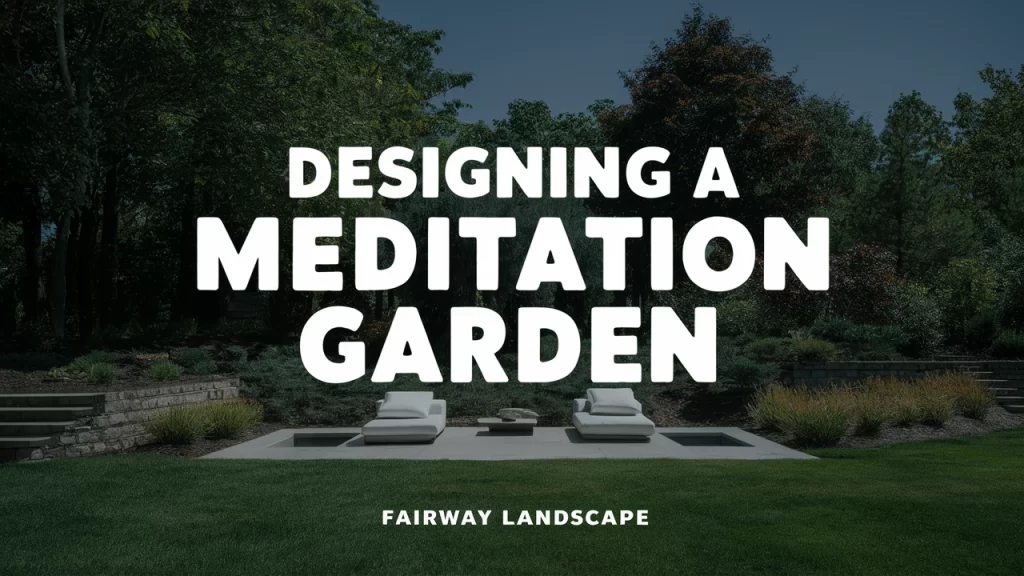In today’s fast-paced world, having a personal retreat where you can unwind, relax, and practice mindfulness is more important than ever. A well-designed meditation garden can provide a serene and calming space that allows you to escape the stresses of daily life and reconnect with nature. By incorporating soothing elements such as calming plants, water features, and comfortable seating, you can create a tranquil oasis that promotes relaxation and inner peace. This article will guide you through the process of designing a beautiful and functional meditation garden.

Section 1: Choosing the Right Location
Finding the Perfect Spot for Your Meditation Garden
Selecting the ideal location for your meditation garden is crucial for creating a peaceful and private atmosphere. Consider the following factors when choosing a spot:
- Secluded corners: Look for a quiet corner of your yard or garden that is away from high-traffic areas and noise.
- Areas with natural sound barriers: Walls, fences, or dense vegetation can help block out unwanted noise and create a sense of seclusion.
- Spots with calming views: Choose a location that offers a pleasant view, such as a scenic landscape or a beautiful garden bed.
When preparing your chosen location, clear the area of any debris, level the ground, and consider the amount of sunlight the space receives throughout the day. For more tips on garden planning, check out our previous blog post: 5 Essential Steps for Planning Your Dream Garden.
Section 2: Selecting Plants for a Meditation Garden
Choosing Calming and Soothing Plants
The plants you choose for your meditation garden can greatly contribute to the overall atmosphere of tranquility and serenity. Some plants known for their calming properties include:
- Aromatic herbs: Lavender, chamomile, and lemon balm emit soothing scents that promote relaxation.
- Soft foliage: Plants with soft, flowing foliage, such as ferns, hostas, and ornamental grasses, create a gentle and calming visual texture.
- Flowering plants: Certain flowers, like lotus, lilies, and jasmine, have a serene and meditative quality that can enhance the peaceful atmosphere of your garden.
When selecting plants, consider their growing requirements, such as sunlight, water, and soil needs, to ensure they thrive in your meditation garden. Fairway Landscape offers professional plant selection and installation services to help you create the perfect calming environment.
Section 3: Incorporating Water Features
Adding Water Elements for Serenity
Water features can add a soothing and meditative element to your garden, with the gentle sound and visual appeal of flowing water creating a calming ambiance. Some water feature ideas for your meditation garden include:
- Small ponds: A tranquil pond with water lilies or koi fish can provide a peaceful focal point for your meditation space.
- Bubbling fountains: The soft, steady sound of a bubbling fountain can help mask unwanted noise and promote relaxation.
- Reflecting pools: A still, mirror-like pool can create a sense of calm and encourage introspection.
When incorporating water features, consider the size of your space, the style of your garden, and the maintenance requirements of each option. For more information on adding water features to your garden, read our blog post: 10 Inspiring Water Feature Ideas for Your Garden.
Section 4: Designing Comfortable Seating Areas
Creating Relaxing Seating Spaces
Comfortable seating is essential for a meditation garden, providing a place to sit, relax, and practice mindfulness. Consider the following seating options:
- Benches: A simple wooden or stone bench can provide a sturdy and natural seating option that blends seamlessly with your garden.
- Hammocks: A gently swaying hammock can create a sense of comfort and relaxation, perfect for meditation or quiet reading.
- Cushioned seating: Soft, cushioned seating options, such as outdoor pillows or a plush chair, can add an extra layer of comfort to your meditation space.
When arranging your seating, consider the view, the amount of sunlight or shade, and the overall flow of your garden. Fairway Landscape’s outdoor furniture and installation services can help you create the perfect seating area for your meditation garden.
Section 5: Adding Pathways and Decorative Elements
Enhancing Your Garden with Paths and Decor
Pathways and decorative elements can add visual interest and create a sense of journey within your meditation garden. Some ideas to consider include:
- Stone paths: A winding stone path can guide you through your garden, encouraging mindful walking and contemplation.
- Garden sculptures: Carefully selected sculptures, such as a Buddha statue or a abstract art piece, can serve as focal points for meditation and add a sense of tranquility to your space.
- Wind chimes: The gentle tinkling of wind chimes can create a soothing soundscape and promote a sense of calm.
When incorporating these elements, be mindful of the overall design and atmosphere of your meditation garden, ensuring that each addition contributes to the sense of serenity and relaxation. For more tips on garden design, read our previous blog post: 7 Essential Principles of Garden Design.
Conclusion
Designing a meditation garden involves thoughtfully selecting a location, choosing calming plants, incorporating water features, creating comfortable seating areas, and adding pathways and decorative elements. By combining these elements in a harmonious and intentional way, you can create a serene and rejuvenating space that promotes relaxation, mindfulness, and a deep connection with nature.
If you’re ready to transform your outdoor space into a tranquil meditation garden, contact Fairway Landscape today at (443) 206-0221 or visit our contact page to schedule a consultation with our experienced team of landscape designers.
